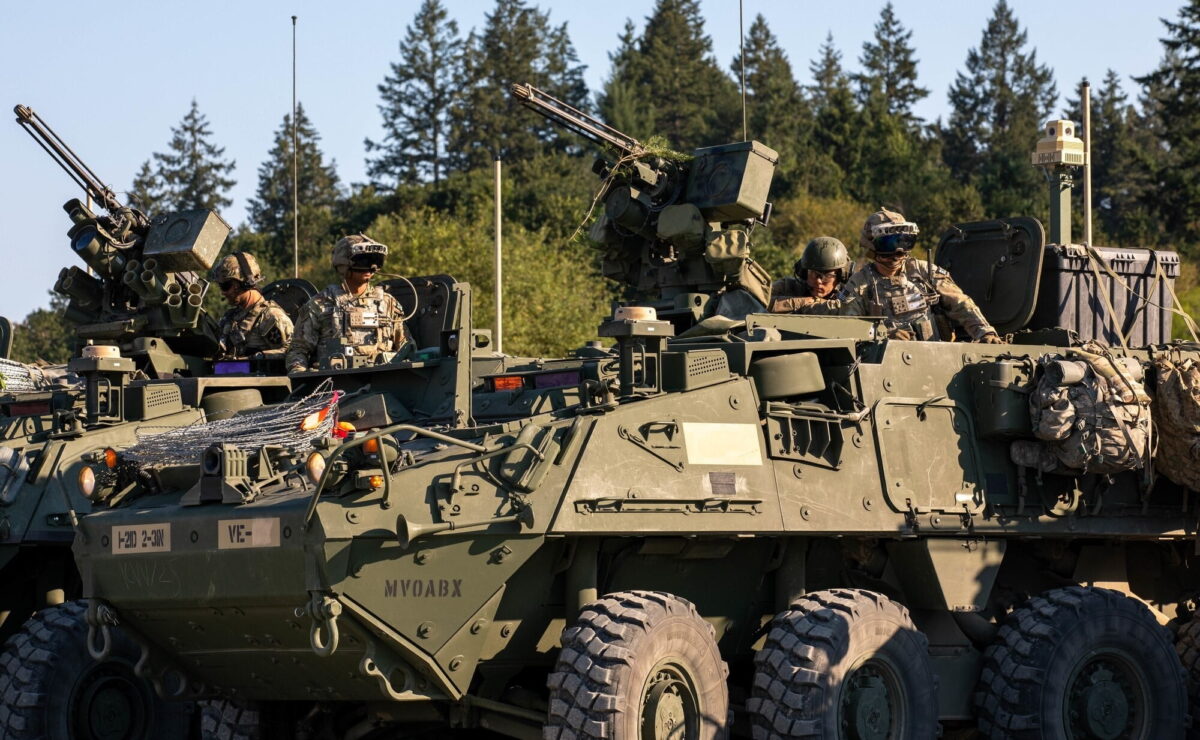U.S. Army tests military Hololens with tanks and in ground combat

Microsoft's military Hololens has made mostly negative headlines so far. But the U.S. Army is pleased with the results of a recent exercise.
After reports of technical problems and budget cuts, there is good news about the military AR headset for a change: During an operational demonstration with Stryker infantry fighting vehicles on August 24 and 25, the US Army was satisfied with Microsoft's AR headset.
During the final capture of a house in an urban scenario, the troop strength required for such a mission had already shrunk significantly, as the headset allows troops to act more efficiently thanks to additional mission data that is available at all times.
An operation of this magnitude previously would have required a larger number of company-sized personnel, Phillip Landan explained on the U.S. Army's official web presence. In his role as assistant program manager, he manages the integration of ground combat products. This includes Microsoft military-modified AR headset "IVAS" (Integrated Visual Augmentation System).
Advantages in urban combat
Recently, a platoon has also been able to conduct such an operation, Landan said. However, during the final presentation in Washington state, the platoon and its five armored personnel carriers were accompanied by two to three infantry regiments and one to two combat teams.

The military Hololens "IVAS" has transparent optics that superimpose a digital image over the real environment. | Image: U.S. Army photo by Spc. Chandler Coats, 5th Mobile Public Affairs Detachment
The capabilities have been expanded "significantly" in the current iteration of IVAS, explains lead network engineer David Morris, Ph.D., of collaborative partner MITRE Corporation.
During the exercise, he said, experiments were conducted primarily with the mobile, scalable MANET network: It sends orientation data to dismounted soldiers, improving communications to vehicles, "so that everybody has awareness of where the others are."
The implementation is reminiscent of modern video games. The AR headset displays graphic overlays, mission data, and messages in the field of view. Thanks to augmented reality, they can now access information that was previously only available at the command post, instead of staring pointlessly at a wall on the way to the mission.
New cameras on the vehicles are designed to strengthen situational awareness in a 360-degree radius, Morris said, "So instead of just having the gun camera and the relatively small forward and reverse cameras, now we've got high-end cameras all the way around the vehicle with both day and night vision."
Soldiers can superimpose the video feeds on their headsets. This lets them know what's going on at any given moment on different sides of the tank. They can also call up a tactical map of the wider mission area. This includes friendly and enemy positions, navigation information, and thermal and night vision in high resolution.
"When all doors and hatches in the Stryker are closed, I can see 360 degrees around my vehicle to check for IEDs, check where my other vehicles are and check their movement, and all of that has been a huge asset to us these last two weeks," said Sgt. 1st Class Kyle Williams, third platoon leader for Blackhorse Company. "It greatly enhances our ability to operate."
IVAS: from reservist to reinforcement?
In subsequent surveys of Soldiers, the new IVAS features were well received, he said. Kyle Williams, for example, praised the better overview of his soldiers in the form of visible icons:
"I can do route planning, I can do mission planning, I can publish graphical overlays, I can navigate with literally a turn-by-turn navigation feature, and I can send messages back and forth to the members of the platoon."
The turn-by-turn navigation mentioned above refers to the ability of navigation systems to indicate direction or lane changes in the terrain promptly.
Recently, there has been a steady stream of bad news about Microsoft's military Hololens: The immature technology, especially weaknesses in the screen, led to massive cuts in the project budget for the coming year.
Still, the U.S. Army is sticking with the project and has purchased an initial batch of the first shipment of up to 5,000 high-tech combat headsets worth a total of $373 million. The overall project has a potential budget of up to $22 billion.
Note: Links to online stores in articles can be so-called affiliate links. If you buy through this link, MIXED receives a commission from the provider. For you the price does not change.